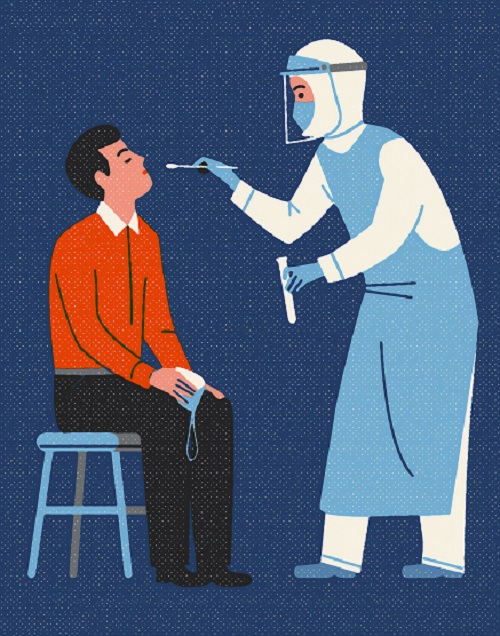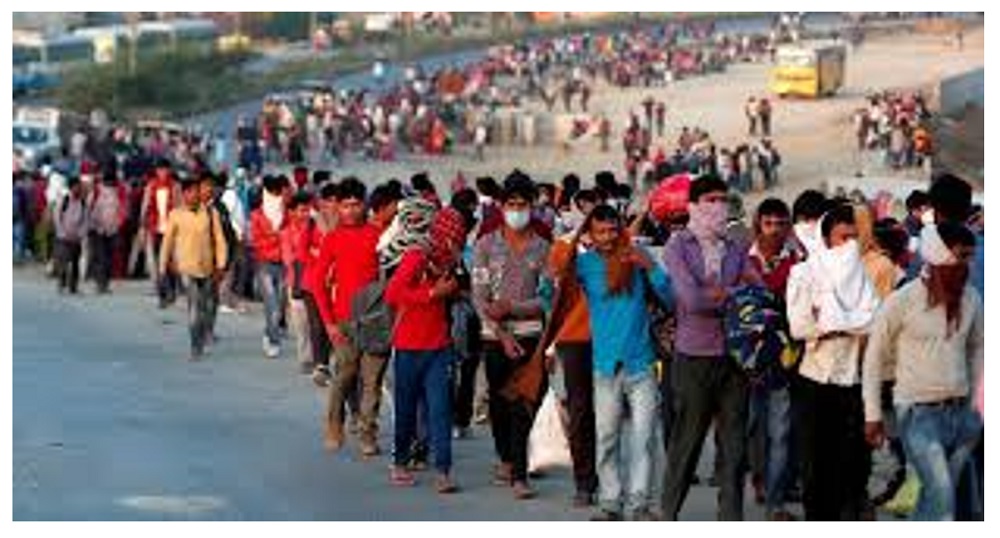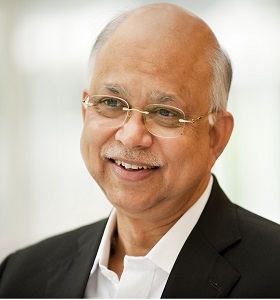
Not a good beginning for the year 2020. Within the first month of January itself, news of a certain coronavirus with its origin in China spreading its arms in various directions started pouring in across the globe. The potency of this virus was so strong that the person infected, transmitted to another person, and that another to another and it spread to person to person and from one place to another. By now, it is a global pandemic.
LSW looks at the future of the pharma sector from its perception and from the industry’s views
From LSW Desk:
COVID 19 - Around the World in 30 days. A peek into the events
Origin: Wuhan, capital of Hubei province, China. The Year: December 2019.
“These data further support Alecensa as the standard of care for people with metastatic ALK-positive NSCLC,” said Levi Garraway, M.D., Ph.D., Roche’s Chief Medical Officer and Head of Global Product Development. “Importantly, these data show clinically meaningful benefit in people with or without central nervous system (CNS) metastases. These data, and our work in lung cancer more broadly, demonstrate our continued commitment to improving outcomes for people with this disease.”
A series of pneumonia like cases with unknown cause emerged in Wuhan. The virus could not be identified. While the health authorities were trying to identify the virus, it spread so fast that the number of people contracted the virus were almost 50 within days.
According to The Lancet Medical Journal, at the onset, the common symptoms were fever, cough, fatigue, and headache. All patients developed complications with acute respiratory distress syndrome.
By the time it was identified as belonging to corona virus, there were 3 deaths and more than 200 infected patients, all in January 2020 itself. An official on infectious diseases confirmed this as human to human transmission.
Meanwhile, due to travel from other countries to China and vice versa, in less than 2 months there were around 800 cases of infection reported from other Chinese provinces and from Thailand, Japan and USA.
WHO declared this corona virus as pandemic and a global emergency and named this disease as COVID 19.
By the beginning of February 2020, China announced above 300 deaths and 14,000 infections.
Within no time, confirmed cases came from UK, Australia, US, UAE, Canada, Germany, Singapore, India and other Asian countries.
This caused panic around the globe. The epidemic spread like the invasion of locusts. Italy declared lockdown in March 2020, and one after the other, almost all the countries went for closure forcing people to remain confined to their homes.
The COVID 19 pandemic not only disrupted the entire global economy, but it changed the lifestyle of the people all over.
With almost all countries going through lockdown, every industry is affected, the businesses undergoing losses and workers out of job.
However, the pharma industry is looking at a better future as some of the global pharma companies are emerging with development of vaccines and drugs looking forward to approval from authorities for usage in corona virus.

Some of the leading companies are fully engaged in fighting the war against COVID 19. AstraZeneca is into developing a vaccine aimed at prevention of COVID 19 infection. With their global reach they plan to go for worldwide manufacturing and distribution. Pfizer jointly with BioNtech is into development and also distribution of a vaccine for prevention of corona virus.
Bayer is helping number of governments for treating patients suffering from SARC-CoV2.Gilead has the promising drug Remdesivir. At the same time, some big companies are looking at a drop in revenue due to China’s present economic status.
All major Institutes across the world have gone into research and development of a vaccine or a drug to combat this novelistic pandemic. Those who have already developed therapeutic solutions are trying to experiment the possibilities of their findings to work on the Covid affected people, but none happens to work.
No existing vaccines have any impact on the current nature of this infection.
No conclusive evidence has come out on the behaviour of this epidemic.
On the domestic front: The Prime Minister declared a nationwide lockdown on MARCH 24, and everything came to a standstill.

The doctors introduced the concept of tele-consultation and e-prescriptions.
The first impact was that of disruption in supply of basic ingredients-API, due to lockdown and closure of Chinese companies resulting in rising price of basic ingredients. The cost of penicillin, vitamins, paracetamol has gone up. India’s dependency on China for API being almost 70%.
Though the pharmaceutical industry was included under essential services, concerns about logistics-transportation, labourers arose. Also, as some of the stakeholders of pharma manufacturing sector whose nature of business was not categorised as essential services added to the concerns of the pharmaceutical companies, e.g. bottling, packaging etc.,
The recent announcement by the government to promote domestic manufacturing of API through various incentives to the companies is to be highly appreciated.
Some of the Indian companies who have been given the go head to manufacture and market the drug are Glenmark, Hetero and Cipla.
Apart from Bharat Biotech, Zydus Cadila got the approval to conduct the clinical trials for its development of a vaccine for COVID 19. However, nothing is certain, until the result comes out. They have just started the process of clinical trials. As announced by the authorities that the trials are to be conducted on a fast track mode, it is not feasible do so. There are more than 100 vaccine candidates around the world speeding against time to come out with some therapeutic solution. But the speed with which the Covid is spreading its wings, panic is growing tenfold. At the same time, the recovery numbers in some countries inhibits the level of anxiety to some extent.
Opportunity for India’s pharma sector to be the frontrunner
India’s pharma sector has been on the forefront, rendering its services to the country by maintaining supply of drugs and continuity of its production. The presence of many global pharma companies who have been operating in India with agreement on the R & D front with the India’s leading companies have been providing therapeutical support for lifetime ailments having the advantage of providing the innovative drugs by their parent organisations.
With comparatively low cost of production, manufacturing, R & D, development etc., these global companies are an integral part of the pharma industry in India. These companies are instrumental in the emergence of CROs and global trials being conducted here.
The industry has got the best opportunity to explore new avenues, development of therapeutic solutions, acquiring advanced technological support, advanced clinical studies, get into collaborations wherever required.
The New Clinical Trial Rule 2019 on the timeline for trial approval process is reduced substantially which is an advantage over others.
Industry associations like the Indian Phrmaceutical Alliance, OPPI etc, should take the initiative of getting into direct contact with people by conducting awareness programs, educate people on the importance of clinical trials and also consider academy-industry partnership. The purpose is, the pharma industry works for healthcare.
Though the pharma companies are in the business of healthcare, their objective should be human care primarily.
Regulations
Government on its part should relax its red-tapism and liberalise certain norms that are applicable in its import policies with regards to drugs, medical devices and medical equipments. There has to be regular interaction between the Regulators and the industry personnel.
India’s pharma sector is in a complex situation involving three ministries. There is the Ministry of Health & Family Welfare, Department of Pharmaceuticals coming under Ministry of Chemical & Fertilizes and Ministry of Commerce. Ideally the entire pharmaceutical industry including Medical devices should be brought under a single ministry which can oversee all policy matters viz., Regulatory framework, Drug licensing, Import licensing, pricing policy and all other aspects.
Sankar Iyer, LSWLifescienceworld (www.lswlifescienceworld.com )
Indian Pharma Industry in the forefront to revive India’s Economy

The pharma Industry in India is the World’s third largest drug producer in terms of value. By virtue of its domination in branded generics. manufacturing 60% of vaccines in the World, Its huge pool of skilled scientists and the low cost of manufacturing, India has achieved an eminent global position. It was expected to grow to US $85 billion by the end of 2020 but the COVID – 19 pandemic and the subsequent lockdown to contain the virus put an end to all economic activity in the country. It is the Pharma Industry and the Medical fraternity who have been in the forefront in the battle against this global pandemic. While the industry remains committed to ensuring uninterrupted supplies of medicines to patients, it is also focused on delivering new innovations to fight Covid and other diseases as well as play the prime mover in the revival of the shattered Indian Economy. It is committed to make Prime Minister Modi’s ‘ATMANIRBHAR’ program a success and achieve self sufficiency in manufacturing generic formulations. It hopes to regain its position as the pharmacy for the World soon.
However, it faces the following problems and requires the Governments support in overcoming it.
Supply Chain Disruption
India depends on China to meet its bulk drug requirements of API. Due to the lockdown and the restrictions on imports from China due to the recent standoff between the two countries, the pharma Companies have to look for procuring their API from local sources which are not only rare but also costlier. This would scale up their cost of production and the selling price of the drugs, which means they would lose the competitive edge in the World Market in comparison to other countries like China.
Work force and Hiring
Due to the Lockdown, the migrant workforces have returned to their native villages in Bihar, U.P., Orissa and West Bengal. The pharma companies are now finding it difficult to hire the locals in their manufacturing units as they are not skilled in this work and demand higher wages. Further the present rules of social distancing and testing for corona virus, etc makes it difficult to reach the optimum level of production to meet the domestic and export demand.
Bank finance for working capital and capital expenditure
Medium and small drug manufacturing units, who had shut down their units on account of the lockdown imposed due to containment of Covid 19 are already burdened with the Bank loans and unable to pay off their earlier loan instalments and the Banks are also unwilling to lend further to these units.
Pharmaceutical companies have to now respond to the rapid challenges arising from disruption in supply chains and the need to change business processes.
Indian Pharmaceutical manufacturing will have to innovate and find new ways of doing business. They have to move from conventional ways to digital to Big Data, artificial intelligence, and machine-learning to improve processes and quality and bring down the cost of production to compete with other countries like China, who is our main competitor.
With the Government of India’s full support, there is no reason that Indian Pharmaceutical Industry cannot become the ‘World’s Pharmacy’
S.G.B. Rao, LSWLifescienceworld (www.lswlifescienceworld.com )
What lies ahead for India’s Pharma sector? LSW finds out the views of some of the leading industry professionals.

Sudarshan Jain, Secretary-General, Indian Pharmaceuticals Alliance
During these unprecedented times, the pharmaceutical industry has worked with the government in an integrated manner and continued to operate with vigour to drive expertise and truly live up to its title as the “Pharmacy of the World”. Having said that, providing impetus to domestic manufacturers especially in APIs, thereby reducing import dependence will strengthen the industry going forward.
The Government of India has addressed the need to reduce import dependence in passing the Bulk Drug and Medical Devices policy. The approved scheme will promote Bulk Drug Parks for financing common infrastructure facilities in 3 Bulk Drug Parks with the financial investment of Rs. 3,000 crores in the next five years; and secondly Rs 7,000 crores have been allocated for production Linked Incentive (PLI) Scheme for promotion of domestic manufacturing of critical KSMs/Drug Intermediates and APIs in the country.
Going forward, the execution of the policy on the ground will be important to accelerate the process, and this step over a period of time help to provide health security.
IPA is committed to an uninterrupted supply of quality medicines to patients in India and globally. We take pride in being of service to the nation and the world at this time.

K G Ananthakrishnan, Director-General, Organisation of Pharmaceutical Producers of India (OPPI)
Health Meets Hope: The Future of Pharma in India
Covid 19 has triggered not only a health crisis, but also an economic and social crisis as well. Undoubtedly, it is the science-based pharma industry along with the medical fraternity who are on the front lines of the battle against this global pandemic. And while the industry remains committed to ensuring uninterrupted supplies of medicines to patients, it is focused on delivering new innovations to fight Covid and other diseases as well as address unmet medical needs that help patients lead fuller and productive lives.

Daara Patel, Secretary-General, Indian Drug Manufacturers Association (IDMA)
Covid 19 Impact & Challenges as New Normal in Pharma Industry Impact on Business
COVID-19 is first and foremost a humanitarian crisis and the role played ll article by pharmaceutical organizations is fundamentally critical. As pharma leaders focus on their crisis responses, it is important to consider these questions and the implications for their respective companies in increasing their flexibility and better adapting to the post-COVID-19 world.
The pandemic is bringing a lot of uncertainty and turmoil to the pharmaceutical industry, and more broadly across the healthcare ecosystem. But it also has inspired new ways of thinking, collaborating and operating a business—all at a pace that we’ve never quite seen before. There is a new normal that doesn’t feel normal at all. And the old adage of”Business as Usual” seems to be now replaced with “Business as Unusual”.

Dr. Viraj Suvarna, President – Medical, Eris Life Sciences
COVID-19 and the pharmaceutical industry
COVID-19 (Corona Virus Disease) is a good example of how the environment can be VUCA or Volatile, Uncertain, Complex and Ambiguous. In future it will be a business case for management classes and any business forecast or future cast will need to include a section for whether one has proactively prepared for a COVID-19 like situation. Though however well we may prepare for such an eventuality, when it hits us, we will always be unprepared, as it is so unpredictable. The pharmaceutical industry was initially caught unawares but being resilient it was able to bounce back to some extent. De-growth has happened more with the acute care segment, but the chronic care segment is not de-growing to the same extent.

Dr. Chirag Trivedi, Senior Director , Sanofi. President- Indian Society for Clinical Research (ISCR)
Future of Clinical Trials in India: Helping our patients more and more.
Today, the pandemic of COVID-19 has created havoc across the world. During the times of this unprecedented crisis, tremendous amount of research is ongoing in the world to find a drug and vaccine against this dreaded disease. Across the globe, people are eagerly looking at the biopharmaceutical industry to come up with a drug and a vaccine.
The biopharmaceutical industry also is responding to this pandemic crisis with speed and agility